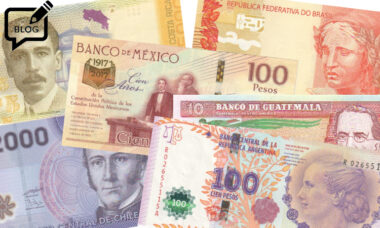 Taxation of novel nicotine products has always been a controversial issue – in part because the complexity of the products compared to combustibles means a wider choice of tax models, but also because the very purpose of imposing a tax is up for debate.
Taxation of novel nicotine products has always been a controversial issue – in part because the complexity of the products compared to combustibles means a wider choice of tax models, but also because the very purpose of imposing a tax is up for debate.
Nobody seriously argues that combustibles shouldn’t be taxed as part of a suite of measures to deter or reduce consumption; but with novel products, of course, there are those who would prefer to encourage as well as those who are keen to deter.
It is well known that the World Health Organization (WHO) falls decisively into the keen-to-deter camp, so it will be no surprise that its American arm recommends in a new report on novel tobacco and nicotine products in Latin America that they should be taxed at a rate that prices them out of the reach of youth purchasers.
The report by the Pan American Health Organization (PAHO) analysed approaches to taxation around the world – for example in cataloguing the types of excise taxes applied to novel nicotine products. (In doing so, incidentally, it made much use of data from Tamarind Intelligence, which produces TobaccoIntelligence – our regulatory reports and data products contain very granular information on tax in individual jurisdictions.)
The PAHO report, “Taxation of novel and emerging nicotine and tobacco products globally and in Latin America”, focuses on heated tobacco as well as nicotine and non-nicotine vaping products, and seeks to suggest good tax policies based on examples coming from tobacco taxation.
‘Long-term effects remain unknown’
Among its major proposals, the report’s authors suggest that taxes making these products more expensive may help keep them away from non-smokers and young users “since they are not inherently safe and their long-term health effects remain unknown”.
“Implementation of excise taxes effective in reducing the affordability of these products will be a key regulatory approach,” the report says.
Other suggestions include a clear definition of the base for the application of an excise tax to novel tobacco products, allowing policymakers and tax authorities to implement duties in a more effective way, the report says. “For example, in the case of e-liquids for ENDS and ENNDS products, a base of mL could be advisable,” it proposes.
For heated tobacco products, meanwhile, it puts forward a model much closer to that of combustible cigarette taxation. “For HTPs [heated tobacco products], defining the unit base as the stick rather than the tobacco weight contained in each stick is much easier to implement from a tax administration perspective, as one can easily control the quantity of stick declared.” Indeed, the report observes that the WHO itself recommends treating HTPs as cigarettes when it comes to taxing them, while vaping products should be taxed “highly enough that it discourages use by youth and non-tobacco users”.
Alternatively, it acknowledges, ad valorem taxes (those based on a monetary sum such as price, rather than on product quantities or characteristics) can be implemented. Here, the retail price of these products constitutes an effective base “because [it] can be easily verified in the market and is less prone to undervaluation by manufacturers”.
And when it comes to taxing nicotine, the report recommends that all sources should be taxed, including tobacco leaf or stem and synthetic nicotine. At the same time, it says, nicotine vaping products should be taxed regardless of the nicotine concentration in e-liquids, as users’ actual intake varies depending on device features such as battery power.
No long history of taxation
“Unlike cigarette taxation, novel and emerging nicotine and tobacco products do not have a long history of taxation, and, therefore, the knowledge and evidence base for best practices is not yet well established,” the report says. “However, the experience in tobacco taxation can shed light on some effective approaches to the taxation of those products.”
Taken together, all these proposals represent an attempt to set out a logical basis for the taxation of novel nicotine products. Some will disagree with the rationale, but few can dispute that clear thinking is called for in an area where it is sometimes the lack of clarity as much as the actual tax regime that frustrates stakeholders.
Of course, policy disparities are not only seen in the area of taxation, and the area on which the report focuses – Latin America – provides a good example.
The sale of heated tobacco products, for instance, has been banned by Brazil, Mexico and Panama, while other countries in the region regulate them as tobacco products. For e-cigarettes, six countries in the region have banned sales: Brazil, Mexico, Panama, Argentina, Uruguay and Venezuela. Seven more countries have introduced different forms of regulation of vaping products while another six have no rules in place. In some countries, e-cigarettes are treated as tobacco or tobacco-related products, in Chile they are considered as therapeutic goods, and El Salvador classifies them as consumer products.
With such variance in approaches to the fundamental regulatory status of these products, it may be over-optimistic to hope that tax policies will all follow the same model. But acknowledgment that taxation needs to be informed by broader goals such as public health, rather than the automatic application of whatever other tax rules happen to already exist, would be a good first step.
– Tiziana Cauli and Barnaby Page TobaccoIntelligence staff







